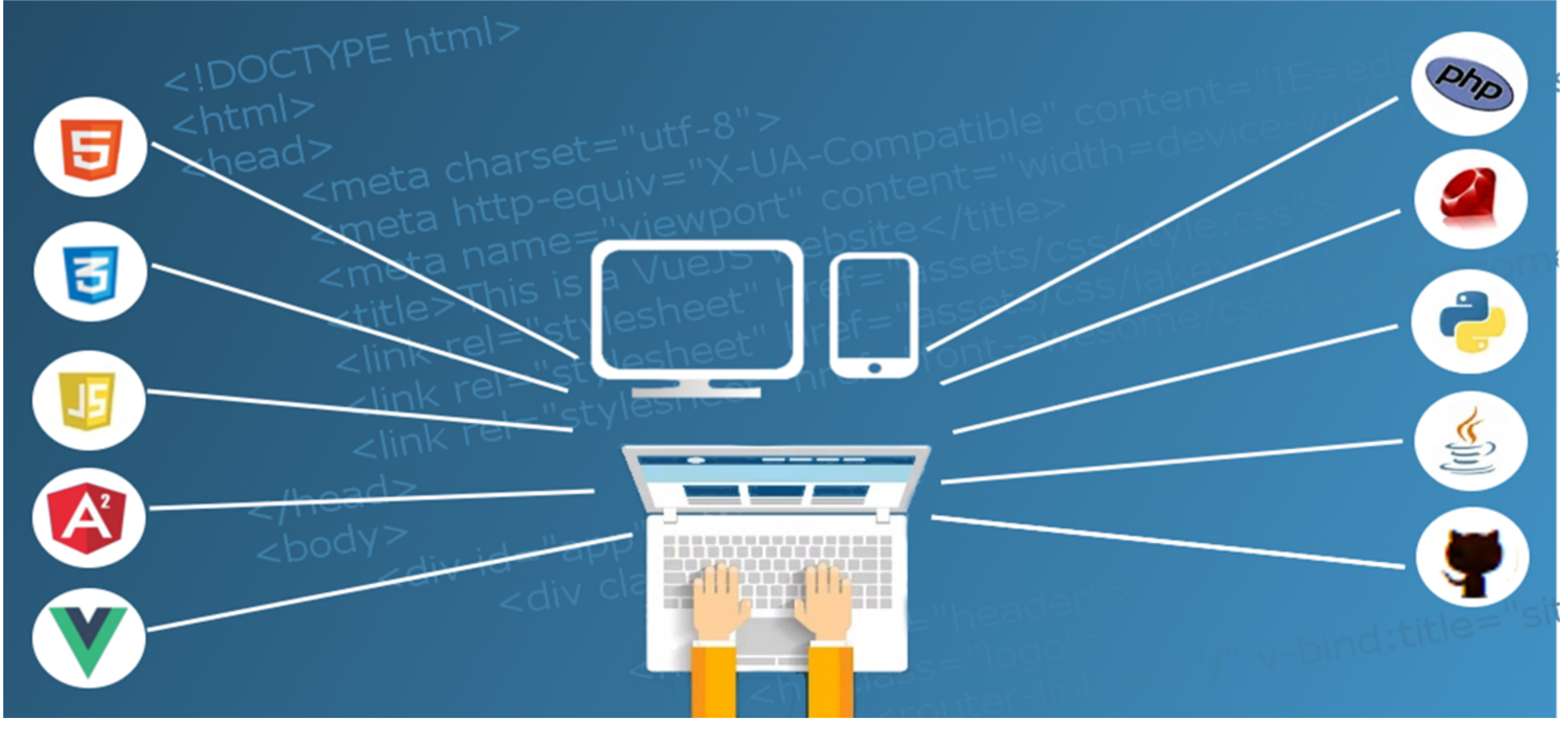There’s a popular saying in English ‘Jack of All Trades, Master of None. It’s interesting to note that you can apply the same concept to the Full Stack Development process.
How?
A full-stack developer is a professional who can efficiently work on client-side and server-side of an application.
However, if you are a full-stack developer, it does not mean that you need to have command in every important programming language. You should have the skill to work on both sides and understand what the stage of app development is.
The client-side of the app usually focus on user interaction and user experience. The server-side or backend deals with database interaction, logic, and server configuration.
According to a popular survey, the demand for full-stack development is increasing. Top IT and Software companies are looking to recruit experienced developers to cater to various projects. Also, you will be satisfied to note that it is becoming one of the highest-paid jobs.
This blog highlights the major front-end and back-end programming languages that you need to learn to become a full-stack developer. Let’s explore more about this exciting opportunity.
JavaScript Framework Language
According to research, JavaScript is one of the most preferred programming languages for developing applications. One of the key reasons for its enhancing popularity is extensive support for both front-end and back-end development.
For instance, the developers use Angular.js and React.js frameworks for developing client-side of the application whereas Node.js is used as a server-side development.
Besides, you need to work with DOM and manipulate JSON. It’s important to understand the key features of the language and functional composition. And since coding is an essential aspect of any app development process, gain expertise in properly structuring your codes and modulizing its portions.
HTML or CSS
The journey to becoming a proficient web developer begins with knowledge of HTML and CSS. It teaches you how to build blocks of a web.
Also, if you want to develop a responsive website and add content to it, HTML is a must. So, while you are learning the ropes of the programming language, you need to primarily focus on Semantic HTML, CSS Box Model, CSS Media Queries, Bootstrap, and more.
How will the components of HTML and CSS boost your skills as a full-stack developer? Let’s take a few examples to explain this point.
If you have a grasp over CSS Media Queries, it helps you in targeting various devices and writing responsive Cascading Style Sheets (CSS) codes. Similarly, Bootstrap is a framework that simplifies the designing and layout of a content page.
Back-End Programming Language
After getting the knowledge of HTML and CSS, it’s time to divert your attention towards back-end programming languages. It is here that you learn how to develop the backbone of an application.
What users view is the application features and design? But an app rests on back-end development. You need to handle things like user authentication, data operations, and app logic.
There is a plethora of server-side programming language that you can learn such as Node.js, Python, PHP, Ruby, and more.
Node.js is one of the popular Java-Script programming languages that offer the benefit of the cross-platform application. It means that you don’t have to learn a new language, even software development companies prioritize to hire Node.js developers.
However, you can develop your skills in any language of your choice. The important thing is to stick with the same and become proficient in it.
Knowledge of Database and Web Store
During your journey as a full-stack developer, you may require the skill set of database storage and web store. Therefore, it’s another arena where you need to have a good grasp and offer your services.
It starts with a deep understanding of relational data and its advantages. Secondly, learn about NoSQL databases such as MongoDB.Also, you need to use in-memory databases and web storage.
HTTP and Rest
HTTP is referred to as a stateless application protocol on the internet. The users communicate with the servers using HTTP. Rest is an Application Program Interface that uses HTTP to access, post, and delete data.
So, when you get down to learn both these programming languages, you have to gain knowledge on what REST is and its significance. Besides, you get to learn the best designing tactics to design a RESTful API. Lastly, you get to know what SSL Certificates are and the usage of Chrome Development Tools.
Web Architecture
The web architecture comes in your kitty once you have done with JavaScript, back-end, HTML, CSS, and HTTP languages.
This is an interesting and significant part of your learning process as here you learn how to develop complex applications. Therefore, all your previous knowledge and experience will come into play.
This part of application development precisely deals with how to separate your files and where to host large media files. You get familiar with the process of structuring data into the database and where to carry out computational tasks
Web Architecture also teaches you to bring performance optimization in applications and developing the app Model-View-Controller (MVC).
Git
Git is a Version Control System (VCS) through which the developers can keep a track of all changes made in the codebase. You analyze and monitor the system to check if you have missed out any important code, updates, fixes the errors in codes, and so on.
Algorithms and Data Structure
This is the last part of learning full-stack development. Usually, it deals with understanding Google Analytics, matrix, and manipulation. So, after gaining the knowledge you can improve your Algorithms and Data Structure skills.
A Final Word
So, if you already have made your mind to become a full-stack developer, having knowledge of all these above-mentioned programming languages is important. Also, you need to gain full expertise in a few of these languages to reap the opportunities that come your way.

